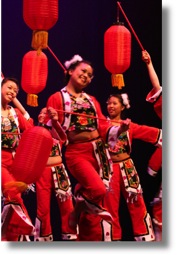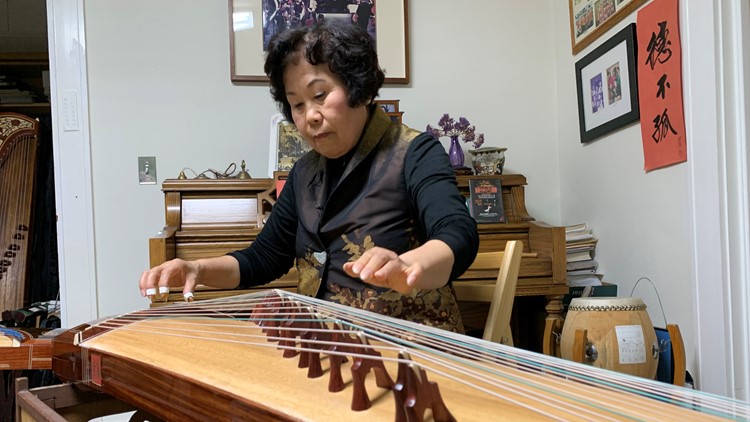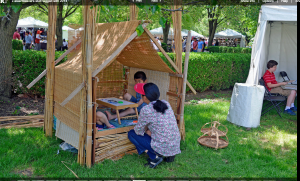According to the 2010 U.S. Census the eight largest Asian American populations in Minnesota are the Hmong, Asian Indian, Chinese, Vietnamese, Korean, Filipino, Laotian, and Cambodian communities. Specifically, 27 percent of the total population identify themselves as Hmong, 15.5 percent are Asian Indian, 11.7 percent are Chinese, 11.1 percent are Vietnamese, 4.9 percent are Laotians, and 3.9 percent are Cambodians (See Figure 2).
Minnesota is home to over 40 different Asian Pacific Minnesotan immigrant and refugee communities. Each community has its own strengths and challenges that may be unique to that ethnic community. The following is an overview of how Chinese and Taiwanese community is faring in Minnesota.
Chinese and Taiwanese American Community Overview

The Chinese Americans are among the earliest AAPIs who settled in Minnesota. Arriving alongside other pioneers, mostly of European descent, Chinese immigrants built their businesses and grew their community in the state starting in the mid-18th century. In the last decade alone, the Chinese and Taiwanese population grew 54.5 percent in Minnesota – much of the growth stemming from the need for highly skilled workers and the rise of Chinese and Taiwanese students seeking educational opportunities in the state’s universities and colleges.ii Although the community is only the third largest AAPI ethnic group in Minnesota, Chinese Americans continue to be the largest AAPI group in the U.S. with an average age of 45 years old.i APA ComMNet REACH CORE project staff and volunteers met with Chinese and Taiwanese American community members and leaders throughout the Twin Cities to understand the community’s strengths, challenges and other social and environmental factors affecting its overall health and wellbeing.

Chinese and Taiwanese American Community Strengths
Chinese and Taiwanese Americans who participated in the project pointed to their increased economic vitality and the ability to maintain a strong cultural identity as strengths in their community. The Chinese and Taiwanese American community in Minnesota has contributed to the creation and growth of area businesses and improved the state’s economy for over a century.ii Increased economic opportunities may be evident in the higher income most Chinese and Taiwanese American families have. The average household income for Chinese and Taiwanese Minnesotans ranges at $73,333.i The Chinese and Taiwanese community also discussed their pride for Chinese and Taiwanese culture and traditions. Community members stated that they believe their cultural heritage is a source of community and individual health. Dr. Niccu Tarafarrodi, a community health researcher, stated in her 2010 report:
“Art and craft are a central part of Chinese culture and of the personal identity of many Chinese. Interview participants stated that they believed the enjoyment of art and crafts could be helpful for relieving depression, loneliness and hopelessness.”
Chinese and Taiwanese American Community Challenges
Chinese and Taiwanese community members who participated in this project identified the lack of adequate transportation, access to affordable health care, and the limited proficiency in English of some of its members as barriers to the community’s overall health and wellbeing. With over 42 percent of the Chinese and Taiwanese population in Minnesota considered to not be proficient in English, many community members indicated that Chinese and Taiwanese Americans, particularly the elderly in the community, are unable to access appropriate care. As a guest during the Chinese and Taiwanese radio show concluded, “[We need] easy access to clinic, overcome language barrier by attending ESL classes. Not enough classes to offer senior, need more people involve and support.” Chinese and Taiwanese community members also stated that younger members seem to neglect taking care of their elderly, which is customary in traditional Chinese and Taiwanese culture. However, with many Chinese and Taiwanese Americans growing up in a society that typically employs professional help to care for their elders, younger Chinese and Taiwanese Americans’ behavior to not care for their elders in a traditional manner has affected the health of the community as a whole.
In addition, APA ComMNet survey results show that although smoking rates in the Chinese and Taiwanese American community was found to be relatively low (figure 3). Chinese and Taiwanese community members who participated in this project stated that a high number of Chinese restaurant workers smoke cigarettes, with some stating that the smoking rate of this particular population is up to 75 percent.
REACH CORE Radio Talk Show
Chinese/Taiwanese Community

Host Peiju: Chinese ancient idea about “Take care all the elders like take care our own parents”, share the great love to improve our community’s health.
Guest Shi: lack of information, do not know where to start.
Guest Li: Most of my time in CSSC is volunteering. We need to reach out to our neighbors and to our seniors. They need activities and the opportunity to get together. 2-3 days a week will be appropriate.
References:
Council of Asian-Pacific Minnesotans (CAPMN), 2012. The State of Asian Pacific Minnesotans: 2010 Census and 2008-2010 American Community Survey Report. St. Paul, MN. Published by the Council of Asian Pacific Minnesotans.
Minnesota Historical Society, 2013. “Becoming Minnesotan: Stories of Recent Immigrants and Refugees.” St. Paul, MN: Minnesota Historical Society. Retrieved January 8, 2013 (http://education.mnhs.org/immigration/)
Tafarrodi, Niccu. NorthPoint Health and Wellness Center Community Assessment Report – A Brief Qualitative Assessment of Five Ethnic Communities: Cambodian, Chinese, Hmong, Lao and Vietnamese. Minneapolis, MN.






